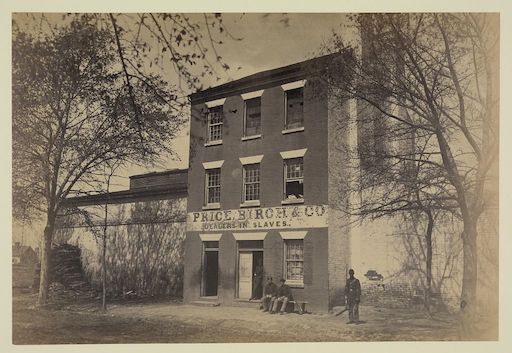Introduction: A Life of Prominence and Varied Roles
Robert Young, a notable figure born on December 27, 1768, left an indelible mark on his community through his multifaceted life. Engaging in various roles and contributions, he became a respected member of his society. From his involvement in trade circles to his service as a soldier and commemorator of significant events, Young’s life story is one of rich diversity.
A Multifaceted Life
Merchant, Soldier, and Consultant
As a merchant, Robert Young was deeply entrenched in trade circles. His connections and expertise made him an influential player in his community. Additionally, he carried the distinguished title of a soldier, having served valiantly during the Revolutionary War. But it was not just on the battlefield where his influence was felt.
During the time of Thomas Jefferson, Young’s knowledge and insights were sought after as a consultant for the Port of Havana. This demonstrated his ability to navigate intricate matters beyond his immediate surroundings and contribute to broader discussions and decisions.
Commemorating Passing Figures
Cavalry Leader at Washington’s Funeral
One of Robert Young’s notable roles was leading the Cavalry during the funeral procession of none other than George Washington himself. This significant task underscored his position as a respected individual capable of shouldering responsibilities during solemn moments of national importance.
Commander of Alexandria Militia
Young’s involvement extended to more than just commemorations. He also commanded the Alexandria Militia during the Battle of the White House. This exemplified his dedication to safeguarding his community and the principles it held dear.

Residences Reflecting a Journey
From 312 Queen Street to 1315 Duke Street
Robert Young’s residences encapsulated his journey through life. Beginning at 312 Queen Street, he eventually constructed 1315 Duke Street. It was at this address that he lived with his family from 1820 to 1824, until his passing. However, financial struggles befell his estate, leading to the Mechanic’s Bank of Alexandria taking possession of his home.
A Dark Turn in History
Conversion into a Notorious Slave Pen
Tragically, the history of the property took a dark turn following Young’s demise. In 1828, the notorious slave traders Isaac Franklin and John Armfield entered the scene. They rented and eventually purchased 1315 Duke Street, transforming it into a hub for their heinous slave trade operations in Alexandria, Virginia. This somber transformation of Young’s once-residence serves as a stark reminder of the atrocities that occurred.

Legacy and Family
Freedom House Museum and Personal Life
Today, 1315 Duke Street stands as a poignant reminder of its checkered past, now housing the Freedom House Museum under the management of the City of Alexandria. Robert Young’s legacy lives on, although marred by the events that followed his passing.
In his personal life, Young was a father to two daughters. His daughter Elizabeth Mary Young married Phillip Richard Fendall II on March 31, 1827. Together, they were laid to rest alongside Young in the family plot.
Roberta Eugenia Young Brown: Carrying the Legacy Forward
An Impactful Offspring
Another daughter, Roberta Eugenia Young Brown, born on February 11, 1817, and passing away on February 23, 1886, made her own mark in history. She married Albert Gallatin Brown, who would serve as the Governor of Mississippi and later become a United States Senator. Their final resting place is in Greenwood Cemetery in Jackson, Mississippi, a testament to the enduring impact of the Young family’s legacy.
Conclusion: Remembering Robert Young’s Varied Legacy
The life of Robert Young reflects the intricate tapestry of a man who wore many hats. From merchant to soldier, from commemorator to resident, his story is one of resilience, significance, and even tragedy. While his name is tied to both moments of national importance and dark chapters in history, Robert Young’s legacy continues to be remembered, preserved, and examined by generations to come.
| Sacred to the memory of Gen’l ROBERT YOUNG born 27 December 1768 died 27 October 1824 Frank, upright and generous, liberal in prosperity; patient in adversity and sickness; a tender husband and parent a faithful friend and accomplished Gentleman and a sincere Christian |
Sources of Information
Pippenger, W. E. (1992). Tombstone Inscriptions of Alexandria, Virginia: Volume 1. Family Line Publications & Heritage Books, Inc.
Powell, M. G. (2000). The History of Old Alexandria, VA, from July 13, 1749 – May 24, 1861. Index by Pippenger, W. E. Willow Bend Books.
Madison, R. L. (2005). Walking with Washington. Second Printing. Gateway Press, Inc.
O’Neill, P. L. (2014). “To Annoy or Destroy the Enemy”: The Battle of the White House after the Burning of Washington. Privately published by Patrick L. O’Neill.
Dahmann, D. C. (2002). The Roster of Historic Congregational Members of the Old Presbyterian Meeting House. Unpublished.
Rothman, J. D. (2021). The Ledger and the Chain: How Domestic Slave Traders Shaped America. Basic Books.